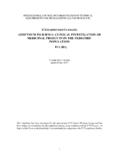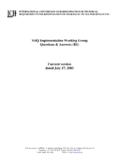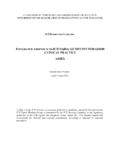Transcription of DRAFT ICH CONSENSUS P - ICH Official web site
1 INTERNATIONAL CONFERENCE ON HARMONISATION OF TECHNICAL REQUIREMENTS FOR REGISTRATION OF PHARMACEUTICALS FOR HUMAN USE DRAFT ICH CONSENSUS PRINCIPLE PRINCIPLES FOR CLINICAL EVALUATION OF NEW ANTIHYPERTENSIVE DRUGS E12A Current Principle Document dated 2 March 2000 This CONSENSUS DRAFT text, agreed by the appropriate ICH Expert Working Group, is transmitted by the ICH Steering Committee to the regulatory authorities of the three ICH regions (the European Union, Japan and the USA) for internal and external consultation, according to national or regional procedures. E12 Document History First Codification History Date New Codification November 2005 Current Principle document version E12A Approval by the Steering Committee as a Principle Document not subject to the usual ICH Step procedures.
2 2 March 2000 E12 PRINCIPLES FOR CLINICAL EVALUATION OF NEW ANTIHYPERTENSIVE DRUGS DRAFT ICH CONSENSUS Principle Signed as a Principle Document, 2 March 2000, by the ICH Steering Committee TABLE OF CONTENTS 1. GENERAL PRINCIPLES FOR THE ASSESSMENT OF 2. STUDY 3. ASSESSMENT OF ANTIHYPERTENSIVE Studies to Assess Antihypertensive Pharmacodynamic dose Response Comparison with Standard 4. ASSESSMENT OF 5. CO-ADMINISTRATION WITH OTHER 6. fixed COMBINATION Factorial Studies in Non-responders to Each i PRINCIPLES FOR CLINICAL EVALUATION OF NEW ANTIHYPERTENSIVE DRUGS INTRODUCTION This document provides general principles for the clinical evaluation of new anti-hypertensive drugs. It describes core principles for the evaluation of antihypertensives that are accepted in the three ICH regions, but some region-specific differences remain. These differences may be harmonized in future, but it is important at present to refer to existing regional guidelines and to discuss the specific requirements with regional regulatory authorities, if required.
3 This document should be considered together with a number of pertinent ICH guidelines: E1 : The Extent of Population Exposure to Assess Clinical Safety. E3 : Structure and Content of Clinical Study Reports. E4 : dose -Response Information to Support Drug Registration. E5 : Ethnic Factors in Acceptability of Foreign Clinical Data. E6 : Guideline for Good Clinical Practice. E7 : Studies in Support of Special Populations : Geriatrics. E8 : General Considerations for Clinical Trials. E9 : Statistical Principles for Clinical Trials. E10 : Choice of Control Group in Clinical Trials. E11 : Clinical Investigation of Medicinal Products in the Pediatric Population. There are, in addition, existing regional guidelines or DRAFT guidelines. CPMP: Note for Guidance on Clinical Investigation of Medical Products in the Treatment of Hypertension. FDA: Proposed Guidelines for the Clinical Evaluation of Antihypertensive Drugs.
4 MHW: Guideline for the Clinical Evaluation of Antihypertensive Agents. 1. GENERAL PRINCIPLES FOR THE ASSESSMENT OF EFFICACY The primary basis of assessment of efficacy of antihypertensive drugs is the effect of the drug on systolic and diastolic blood pressures. In the past the primary endpoint of most studies was diastolic blood pressure. Although all drugs to date have reduced both systolic and diastolic blood pressures, the recognition of isolated or predominant systolic hypertension as a significant and remediable risk factor demands explicit evaluation of the effect of a drug on systolic blood pressure. Many clinical trials of many interventions (including low and high dose diuretics, reserpine, and beta-blockers, usually as part of combination therapy) have shown consistent beneficial effects on long-term mortality and morbidity, most clearly on stroke and less consistently on cardiovascular events.
5 Whether some drugs or combinations have 1 Principles for Clinical Evaluation of New Antihypertensive Drugs better effects than others on overall outcomes or on particular outcomes is not yet known. Formal mortality and morbidity outcome studies are not ordinarily required for approval of antihypertensive drugs and the kind of active control mortality and morbidity studies that would be convincing is not well defined. Results of a large number of on-going outcome studies could affect this policy and modify requirements. It should be noted that, even if an antihypertensive effect has been proven, a significant concern about a detrimental effect on mortality and/or cardiovascular morbidity might lead to a need for outcome studies. 2. STUDY POPULATION The patient population studied with a new antihypertensive should include a broad range of patients with essential hypertension.
6 Most patients will be in the mild to moderate range. Studies of patients with both diastolic and systolic hypertension are expected. More severe hypertension should also be studied. Patients with relevant concomitant illness (such as diabetes mellitus and coronary heart disease) should be included unless the drugs they need would interfere with the study; , for patients with heart failure standard treatment requires use of one to several agents affecting blood pressure that could have pharmacologic actions similar to the study drug. In general, patients with target organ damage secondary to hypertension should not be included in placebo-controlled trials of more than very brief duration, although such patients can be included in active controlled trials. Patients from relevant demographic subsets should be studied, including both men and women, racial/ethnic groups pertinent to the region, and both young and older patients.
7 The very old or "fragile elderly," , patients >75 years old, should be included. In general, all population subsets should be included in the same studies, rather than conducting studies in subgroups. This facilitates comparisons across subsets in the same environment. An exception would be severity subgroups, where study designs could be different for different severities. Patients with secondary hypertension, isolated systolic hypertension, and hypertension during pregnancy, and children with hypertension should be studied separately, if specific indications for use in those populations are being sought. 3. ASSESSMENT OF ANTIHYPERTENSIVE EFFECT Studies to Assess Antihypertensive Effect The primary endpoint of studies to assess antihypertensive effect is the absolute change at the end of the dosing interval (trough) from drug-free baseline blood pressure compared to the change in the control group.
8 As a secondary endpoint effects can also be assessed with respect to pre-defined response criteria. In general, the effect on blood pressure at the end of the study is the primary endpoint, but the time course of the onset of the effect is also of interest; this can be defined by examining trough response each week or every two weeks in some studies. The effect on blood pressure and the relationship of the response to dose should be characterized in short-term studies (4-12 weeks), whose short duration allows for use of a placebo control. Long-term (six months or more) studies should also be carried out to demonstrate maintenance of efficacy and to look for withdrawal effects. Because blood pressure readings (except perhaps ABPM readings) are subject to systematic error (bias), because spontaneous changes in blood pressure can be large, and because the effect of active drugs is often small (diastolic blood pressure change of 4-5 mm Hg more than placebo), studies conducted in a blinded fashion and with 2 Principles for Clinical Evaluation of New Antihypertensive Drugs placebo controls are essential (See ICH E10).
9 In general, short-term studies should be placebo-controlled. dose -response studies and studies using an active control drug as well as placebo are strongly encouraged. Controlled randomized short-term studies of various designs can be useful in demonstrating effectiveness, for example (See also Appendix): A) Single fixed - dose vs. placebo B) Optional titration (based on response) vs. placebo C) Forced titration vs. Placebo D) fixed - dose , dose -response vs. placebo (can use forced titration to reach the randomly assigned fixed maintenance dose ) E) Any of the above designs with an active control drug Long-term studies to show efficacy (and which are also needed for assessment of long term safety) would usually use active controls, preferably with a placebo-controlled randomized withdrawal study at the end of treatment to establish assay sensitivity (See ICH E10) and assess possible withdrawal effects.
10 Another long-term active control trial design that could support assay sensitivity would be one in which patients are initially randomized to three treatments (test drug, active control drug and a placebo), with the placebo only maintained for short time ( , one month). A long-term open exposure followed by a placebo controlled randomized withdrawal could also show long-term efficacy. The effect of the drug over the duration of the dosing interval has generally been evaluated in recent years with ABPM studies (which can incorporate dose -response elements and an active control), but studies that measure blood pressure at approximate peak and at trough (pre-dosing) blood levels can also be used. Specific requirements vary among regions. Additional information may be obtained from self (home) measurement of blood pressure with the help of automatic devices, but validation of the device used is necessary.
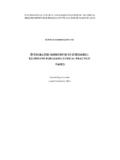
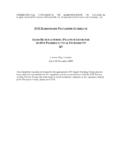
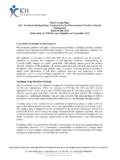
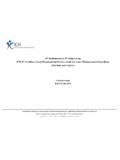
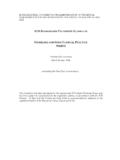
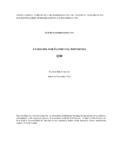
![[ICH E2F] [EXAMPLE DSUR – PHASE III …](/cache/preview/1/3/5/f/e/1/c/f/thumb-135fe1cf2cdb82799c462ad0ea089c48.jpg)
